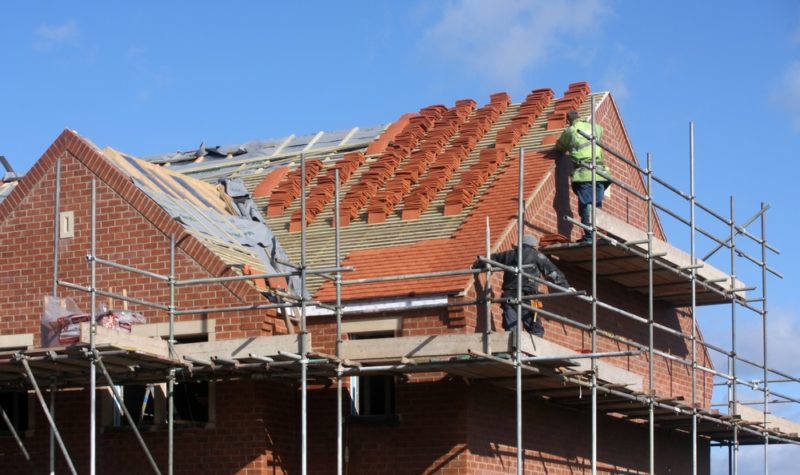Why Taylor Wimpey could be a stock for all seasons

Robert Stephens, CFA, explains why he believes that housebuilder Taylor Wimpey could be a stock to own for the long run.
It’s rare to find a stock that offers income, growth and value appeal at the same time. Often, a company’s shares may have one or perhaps two of those attributes. Taylor Wimpey, though, seems to be a good value share with a high yield and earnings growth potential.
| First seen in Master Investor Magazine
Never miss an issue of Master Investor Magazine – sign-up now for free! |
The performance of the business has been sound in recent quarters. Demand for new homes has been buoyed by demand-side government policies, such as Help to Buy and SDLT relief, which are due to remain in place over the medium term. Population growth is expected to remain ahead of housing starts, which signifies that the UK’s imbalanced property market could get even worse.
Since emerging from the financial crisis, Taylor Wimpey has sought to strengthen its balance sheet. In 2018 it reported a record level of net cash, while a large land bank could provide a solid foundation for long-term growth.
Risks, of course, remain to the wider housing market. A fluid Brexit process which, at the time of writing, is no clearer than it was a number of months ago and a weak consumer environment could hold back the sector, as well as investor sentiment. But with a low valuation, the stock could be a strong performer in the long run.
Housing market
While house price growth in the UK has been subdued over the last year, the recent Halifax House Price Index showed a 2.8% increase in house prices. According to Taylor Wimpey’s recent updates, demand for its new homes has been resilient, with the company reporting increased completions and a rising order book.
Part of the reason for this is a continued imbalance between demand and supply. It is forecast that between 2014 and 2039, the UK will have an additional 210,000 households per year. In 2017, 178,000 homes were built in the UK. Therefore, the difference between the number of homes required and those being built – the housing gap – could increase over the long run. This could put upward pressure on house prices, and mean that demand for new homes remains robust.
Although there could be a significant increase in the number of homes being built each year, this seems unlikely based on the industry’s track record. The last time more than 210,000 homes were completed in a year was in the late 1970s. This has been a key driver behind house price growth over the last few decades, and could continue to have a major influence over the direction of house prices in the long run.
Government policy
Under the Conservative government, and the Coalition government before it, demand for new homes has been boosted by the Help to Buy scheme. This provides a 20% loan to first-time buyers, which means that only a 5% deposit is required in order to get onto the property ladder. The loan does not incur interest in the first five years, while it is repayable when the home is sold.
The policy has enabled a larger pool of first-time buyers to gain access to the property market. Crucially, though, it has pushed first-time buyers towards newbuild properties. This has benefitted Taylor Wimpey and its peers over a prolonged time period. The government is expected to keep the Help to Buy scheme in place until 2023, which could provide the company with a continued tailwind over the medium term.
| First seen in Master Investor Magazine
Never miss an issue of Master Investor Magazine – sign-up now for free! |
Alongside Help to Buy, the government has also introduced SDLT relief. This has made it even easier for first-time buyers to purchase their first home, since no stamp duty is payable for the first £300,000 of a property’s value when purchased by first-time buyers. This continued focus on demand-side policies, rather than supply-side policies, may be beneficial to housebuilders, since it means less competition and increasing demand for their homes.
Financial standing
Having experienced a difficult period during the financial crisis, a number of leading housebuilders have sought to put in place a stronger balance sheets in case of difficult market conditions in future. Taylor Wimpey is no exception. For 2018 it reported a record net cash position of £644 million. This provides it with significant financial flexibility, and means it can afford a more generous dividend payment policy.
It also means that should there be a challenging operating environment in future, it will be in a much stronger position to overcome it than was the case in the financial crisis. This could help to support investor sentiment to some degree should the outlook for the UK economy come under pressure.
The company has also invested heavily in its land bank in recent years. It has been steadily acquiring land so that it now has one of the largest strategic landbanks in the industry. It stands at 127,000 plots, which provides it with greater flexibility and control over the planning permissions it receives.
Risks
Taylor Wimpey, of course, faces a number of risks to its outlook. While government policies such as Help to Buy and SDLT relief are expected to continue over the medium term, political uncertainty at the time of writing means that there could be significant change over future months.
For example, a general election could be called, or there may be a new Prime Minister in place over the near term. This could change government policy, and may mean that there is less focus on demand-side policies that ultimately inflate house prices, and a greater impetus on supply-side policies that could narrow the housing gap over the long run.
Affordability may also limit the potential for continued house price growth. House prices as a multiple of earnings reached their highest ever level last year. This suggests that they may be unable to match the same level of growth as in recent years.
Should interest rates move higher following Brexit, obtaining the necessary level of finance required to afford a home at current prices may also become more challenging. Clearly, the future path of interest rates will be closely linked to the performance of the economy post-Brexit. Given the fluid nature of the Brexit process, this may prove to be difficult to accurately forecast. As such, investors may demand a margin of safety in case a weak pound causes a spike in inflation over the medium term.
Valuation
| First seen in Master Investor Magazine
Never miss an issue of Master Investor Magazine – sign-up now for free! |
The Taylor Wimpey share price has risen sharply since the start of the year. Despite this, the stock continues to have a relatively low valuation. For example, it has a P/E ratio of 8.5. This indicates that investors are still wary regarding the prospects for not only the housebuilding sector, but also the wider economy. It also suggests that they may be pricing in some of the risks that are currently faced by the company.
The financial outlook for Taylor Wimpey continues to be positive. It is forecast to record a rise in EPS of 4% in the 2019 financial year. With a growing order book and resilient demand for its properties, it may be able to grow its bottom line at a modest pace despite the general caution surrounding the UK’s economic outlook.
In terms of its income potential, the company has a forward dividend yield of 10% for the 2019 financial year. It stated in its 2018 financial results that it intends to pay a dividend of £600 million in 2019. Part of this is set to be made up of a £250 million ordinary dividend that equates to 7.6p per share. This is expected to be paid in all market scenarios, and has been stress tested in a variety of challenging conditions including a 20% fall in house prices and a 30% fall in volumes.
The balance of the dividend payment is expected to be from a special dividend that has been paid in each of the last five years. This puts the company on an ordinary dividend yield of 4.2%. When special dividends are included, its forward dividend yield for 2019 is 10%. It is due to be covered 1.2x by earnings. Due to the highly cash-generative nature of the business, it would be unsurprising for there to be further special dividends paid in future years.
Outlook
The near-term prospects for the Taylor Wimpey share price could be highly volatile. The political situation in the UK is highly uncertain, and it could have an impact on investor sentiment. It may also influence the future of government policy, which could directly impact housebuilders, while the outcome of the Brexit process may change the prospects for interest rates and demand for new homes.
The company, though, has a strong balance sheet which could afford it a degree of protection from challenging operating conditions. Its large land bank provides it with a strategic advantage, while the housing gap could act as a major catalyst on its financial prospects. Should there fail to be a change in government, a continued focus on demand-side policies may lead to continued high demand for newbuild properties.
With a low valuation, modest growth potential and a solid income outlook, the company appears to offer investment appeal to a range of investors. Sentiment may ebb and flow over future months as the prospects for the UK economy remain difficult to predict. But over a long-term timeframe the stock could produce high total returns relative to the wider index.

Comments (0)